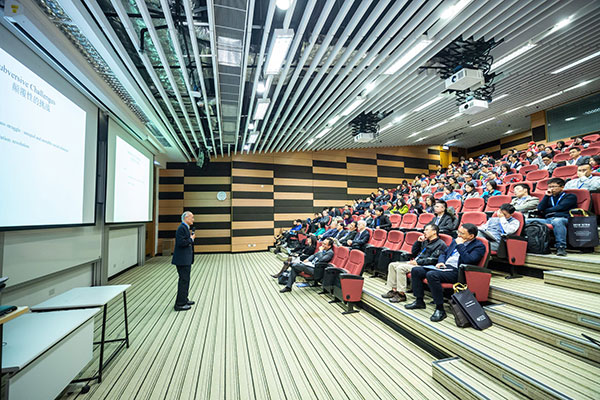Zenvoy Whitepaper
How Artificial Intelligence Can Supercharge Employee Engagement
05.31.21 Draft

Is Artificial Intelligence an Overlooked Employee Engagement Tool?
Employee engagement is one of the top priorities for today’s HR departments. It’s only logical, given that a vast majority of employees do not fee engaged. According to the Gallup State of the Global Workforce, “85 percent of employees are not engaged or actively disengaged at work,” costing an estimated $7 trillion in lost productivity. What’s more, approximately 1/3 of all employees voluntarily leave their jobs each year, and that figure only appears to be growing. High employee turnover rates are extremely expensive, while businesses with engaged employees tend to have 21 percent higher profitability. Ultimately, an unengaged workforce will cost more in terms of lost productivity, high absenteeism, and replacing and training new employees.
That said, employee engagement is often easier said than done. Because employee needs can vary widely, there is not cookie-cutter approach to maintaining engagement levels.
Like other business units, today’s HR departments have come to deploy technology to boost productivity and efficiency, leading to a more data-driven approach to HR. One of the hottest topics in professional HR circles today is how to use technology to enhance employee engagement.
And that’s exactly where artificial intelligence (AI) can help. When applied correctly, AI can help employees connect to each other and form stronger workplace bonds, while also promoting loyalty.
This might seem counter to the common perception how AI can support organizations. Typically, we associate AI with more obvious data-driven applications such as predictive analytics and automation. However, AI can also be used in more subjective tasks associated with employee engagement. And because it’s not as obvious as other applications, AI is often overlooked as an employee engagement tool.
This whitepaper explores some of the unconventional uses of applying AI to employee engagement and how that can have a significant impact on organizational culture.
What Is Employee Engagement?
Before we continue, it’s a good idea to define employee engagement and to clarify what that means in terms of building a strong workplace culture.
Generally speaking, what we call employee engagement encompasses a number of activities designed to inspire passion for work and the organization, while also engendering personal investment in the organizations’ outcomes and success. Because it deals with how employees feel about their jobs and the workplace, employee engagement can touch a wide variety of topics such as:
- Compensation and Benefits
- Transparency and Communication
- Career Development and Training
- Tools and Resources
- Teamwork and Collaboration
- Recognition and Rewards
And while everyone has differing needs to feel engaged, engaged employees generally share some characteristics. These include:
- Motivated: Engaged employees don’t just do their jobs, but they often take on new opportunities for growth and development.
- Brand Advocate: Engaged employees often advocate for the organization’s brand, both in the workplace and beyond.
- Engaging: Engaged employees often engage their peers and coworkers, encouraging them to participate in the organization’s culture.
- Committed to Growth: Engaged employees are dedicated to achieving company goals.
Ultimately, building an engaged workforce requires developing a sense of mission, but also of community. And that’s where applying AI can make an enormous difference.
Want to Learn More about Employee Engagement?
Check out our e-book A Primer to Employee Engagement for a more complete discussion of this topic.
What is Artificial Intelligence (AI)?
The term AI gets thrown around a lot in technology circles and media, though it’s more of a catch-all term for a number of technologies. That said, we like IBM’s definition:
Artificial intelligence leverages computers and machines to mimic the problem-solving and decision-making capabilities of the human mind.
Depending on the type of system, AI has a wide variety of uses and applications. These include (but are not limited to):
- Identifying cancer cells
- Learning how to drive a vehicle
- Analyzing huge datasets to make predictions
- Developing a natural language dictionary to the point of being able to hold a cogent conversation
- Identifying opportunities for efficiencies in processes
- Analyzing and predicting risk
While many of these tasks seem quite different, they all involve a machine/computer that is given a goal and data, which it can then analyze and formulate conclusions on how best to reach that goal.
Applying AI to Employee Engagement
If the goal of employee engagement programs is to create engaged employees, then all AI applications should be aligned with that goal. Specifically, AI applied in this area should focus on improving interaction among employees, creating greater organizational transparency and communication, and fostering collaboration. Applied properly, AI will significantly contribute to building a community of employees within an organization.
Common Characteristics of Communities
Communities are social groups where its members share one or more commonalities. These can be values, norms, interests, customs, geography, or other demographics.
Typically, when communities require a number of things to form: A place to meet and members with a common interest or cause. Workplace communities can form around both professional and personal interests or causes.
| Professional | Personal |
|---|---|
| Role/Department (IT, HR, Sales, etc.) | Working mothers |
| Management level (C-suite, Directors, etc.) | Ethnicity/Race |
| Projects | Sports-related |
| Employee status (part-time, full-time, etc.) | Book club |
Typically, communities of both types form naturally; employees will seek out people with common interests. The challenge most organizations have, however, is that groups tend to be informal. Adding in an online platform that enables that can vastly improve the quality of conversation held in those groups, along with the level of participation.
The challenge is for employees to find communities where they belong and that are useful to them. An additional layer of AI can analyze employee interests and needs and strategically place them into discovery cohorts. This will help employees uncover potential workplace communities they might not know exist, boosting the likelihood that they will participate in those groups. This is particularly helpful in large organizations with employees who are geographically dispersed and workers don’t have an easy way to interact with peers in other locations.
Groups can be permanent or temporary, promote collaboration and support team building, while also collecting valuable employee insight. They can be focused on crucial discussion topics, or they can be more informal and general, focused on common interests. By increasing employees’ opportunity to participate in interest groups, they will more likely feel comfortable in and connected to the organization.
AI can also match employees to company-wide community boards. Employees are free to join both public and private discussion groups and engage with coworkers in an open forum. People, conversations, recourses are all organized according to the employees needs and company agenda.
But it’s not only community groups where AI can contribute to increasing employee engagement. When employees need resources, they often turn to their peers. But in large organizations, it can be difficult to identify the right person.
Using a similar methodology to using AI to match employees to groups, AI can also be used to connect employees to each other. These connections can be made based on overlapping interests, but employees can also express a need and have an AI platform connect them to someone within the organization who can possibly help them. And based on their feedback, the AI can learn what types of connections work best for any individual and refine who it matches them to.
Conclusion
Ultimately, AI can be used to facilitate professional connections, but also help match people to mentors, and even foster friendships in the workplace. And the stronger the bonds an employee feels to his/her coworkers, the more likely they are to feel engaged. Of course, this is just one tool in the employee engagement toolbox. But fostering a sense of comradery and belonging is vital to developing an engaged workforce. And the more engaged employees feel, the more productive they are, and the more profitable a company becomes. It’s a win-win for everyone.
How Zenvoy Nurtures Employee Engagement in Organizations
Zenvoy offers a suite of AI-driven tools that empowers employee engagement and connectivity.
How do we do it? It’s simple. Zenvoy leverages the power of artificial intelligence to bring your employees closer together through a suite of engagement tools that intelligently connect your workforce around the initiatives, topics, or issues that matter. We solve strategic business problems within companies facing communication, engagement, departmental silos. Most importantly, Zenvoy introduces and facilitates NEW, contextual, connections among company employees.
Want to see it in action? Click here to schedule a demo.
Some of our featured
customer stories
Unique engagement success stories
of companies just like yours!

Cigna is one of the largest insurance companies in the country, with 100,000 employees spread across the United States, Europe, and Asia.

As one of the country’s leading business and entrepreneurial colleges, USC’s Marshall School of Business alums are trailblazers of small business, enterprise management and professional service.

As one of the world’s premier hospitality conventions, IMEX Group’s sole aim is to unite and advance the meetings industry— everything they can to educate, innovate and help event professional make powerful

In early 2018 the Turnaround Management Association (TMA), set out to better connect 35 of its separate chapters all over the globe. With over 12,000 turnaround and financial professionals.
